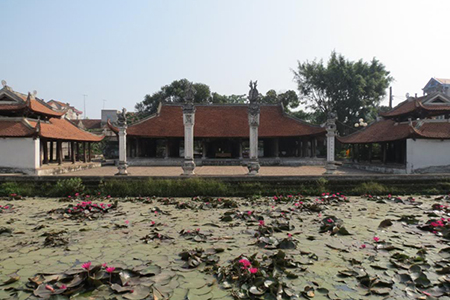The earliest known communal houses in Vietnam date back to the 16th century. One of them is Tay Dang communal house in Hanoi.
The earliest known communal houses in Vietnam date back to the 16th century. One of them is Tay Dang communal house in Hanoi.
It lies on the fringe of the village and faces the West, according to a rule of geomancy. front of it is a crescent-shaped lake. The communal house was built around 1570 and has a peculiar architectural lay-out. Many researchers regard it as the starting point of Vietnam's ancient architecture. What stands out is four curved roof comers and elaborately carved images.

It is built on an elevated ground but has a low roof which is designed to shelter it against rain and excessive sunshine. Therefore, one feels that the communal house is somewhat "absorbed" by the earth. The main building material for the house is the wood from the jack-fruit tree (paramita), a tree which means "arrival at the other shore free from all sufferings".
Tay Dang communal house is attractive. It is the heritage of the architecture of the 16th century.



